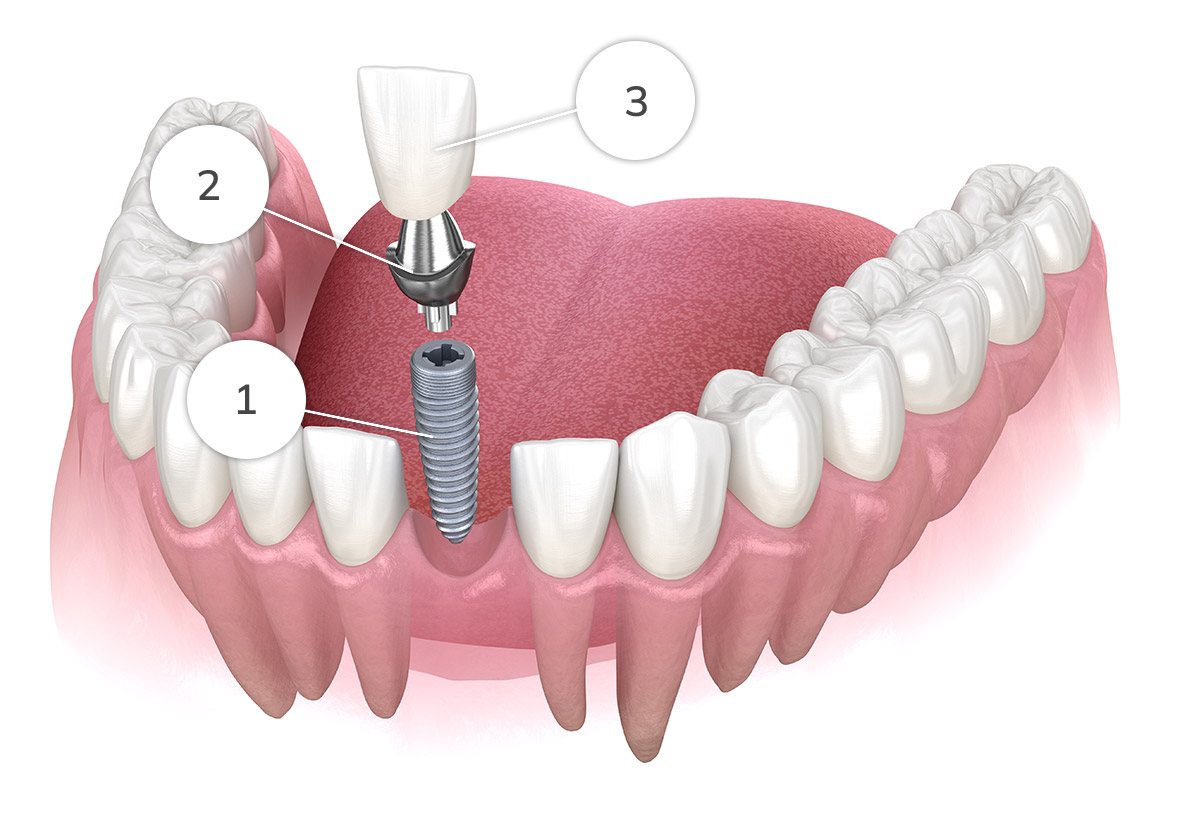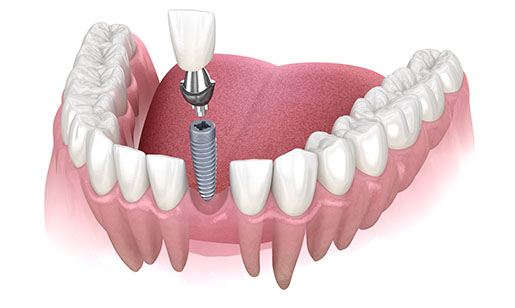
Single or Multiple Implants
If you’re missing a tooth, you’re probably self-conscious about your smile or you’re not able to eat the foods you love effectively. Replacing missing teeth with dental implants if often the best way to restore your missing tooth with one that looks, feels and functions like your original tooth, if not better.

1 Dental implant
This titanium post is a strong, non-toxic metal that acts just like a natural tooth’s root in the jawbone.
2 Abutment
The abutment permanently attaches to the implant and provides support for a dental crown.
3 Porcelain crown
An artificial tooth (crown), custom-molded to match your natural teeth, is permanently fitted to the abutment.
Single Implant Posterior
Multiple Implants and Bridge
Immediate Implants
Often the best time to place an implant is at the time of extraction of the tooth to be replaced. Opting for an immediate dental implant following a tooth extraction offers a range of compelling benefits. This approach not only preserves the integrity of your jawbone by utilizing the existing socket, but it also minimizes the need for additional surgeries and procedures. By placing the implant post immediately after extraction, the surrounding bone is encouraged to maintain its shape and density, preventing potential bone loss that can occur over time. Furthermore, immediate dental implants can significantly reduce the overall treatment timeline, as you won't need to wait for the extraction site to heal before implant placement. This means you can enjoy a restored smile sooner, allowing for improved functionality, aesthetics, and overall confidence. Choosing an immediate dental implant not only streamlines the process but also contributes to the long-term success of your implant, ensuring a stable foundation for years to come.
Why do I need to replace my missing tooth?
Bridge or Implant?
Steps for a single or multiple implant procedure
-
Consultation and examination
At your first visit, well discuss your goals and expectations and examine your mouth. We will offer you all treatment options, including all options not implant based. You will be given a proposed treatment plan and the costs for that treatment. If you choose to proceed with treatment, a 3D CBCT scan, digital scans and photos will be taken to plan and prepare for your treatment.
-
Implant surgery
A minor surgical procedure where the dental implant is placed in the gum and bone, often in less than an hour. The area will be fully anesthetized, so you don’t feel any pain. A temporary tooth will be placed on the implant or a removable retainer with a tooth will be inserted while you heal.
-
3-4 months of healing
The implant requires 3-4 months to heal and fully integrate with the bone before placing the final tooth. During this healing time, we will see you periodically to monitor your healing.
-
Placement of your final crown or bridge
After the implant has healed to the bone, we will digitally scan the implant and surrounding tissue and teeth to design and fabricate your final crown. This appointment often takes 15 minutes and requires no anesthetic. Your custom-made final abutment and crown arrive from the laboratory 2 weeks later and is checked for fit and esthetics and permanently placed in your mouth. You are ready to smile and chew with your new teeth.
Benefits of an implant

Single or Multiple teeth
Starting at $3500-4000
The treatment fee includes:
- Complete oral evaluation
- Cone-Beam 3D CT scan and any additional x-rays and scans
- All needed dental extractions and minor bone grafting
- Oral moderate sedation (IV sedation at additional cost)
- Temporary crown or appliance during healing
- Final crown or prosthesis
- 5 year limited warranty
